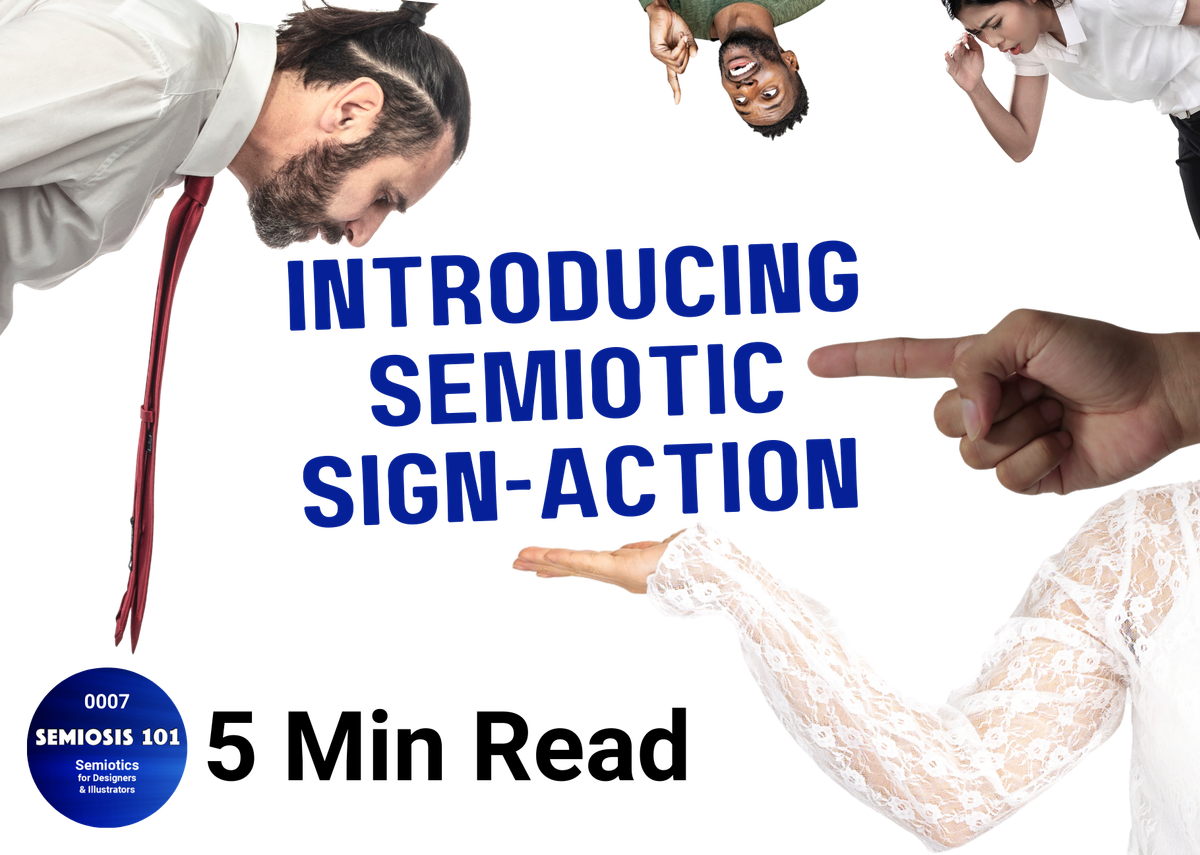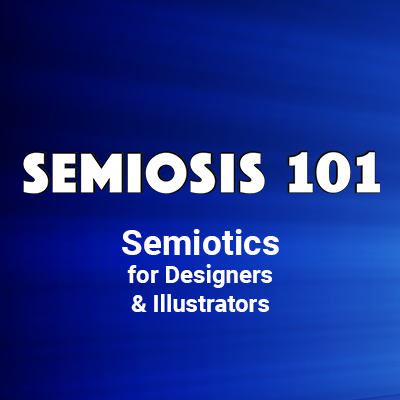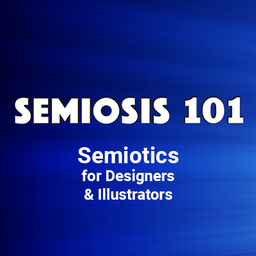BLOG 07: Introducing Semiotic Sign-action

Semiosis 101 - 5 minute semiotic read
As illustrators and designers, Charles Sanders Peirce’s theory of semiotics tells you you are missing a crucial benefit.
You creatives naturally focus on your design’s or illustration’s aesthetic. After all, your client has chosen you to answer their brief, haven’t they? They chose you.
The client, in their briefing, needs you to visually communicate something they find important to ‘put out there.’ (At this point let’s stay general with what something can be, eh?) That something goes out into the world in some visual form to …?
Yes, an audience. People. Lots of different people. People you hope will understand what you have created and give the client a return on their investment by understanding the something to do what the client wants them to do.
Peirce’s semiotic theory helps you visually communicate to people.
Peirce’s semiotic theory is Semiosis - semiotic sign-action - a pragmatic approach to visually communicating meaning.
A semiotic sign is visually encoded meaning to provoke an action. A semiotic sign is not tangible. We are not discussing signage here, that is a particular sub-genre of graphic design. No, a semiotic sign is how you attach meaning into the elements of your visual language.
When you design or illustrate your aesthetic is constructed from simple marks, shapes, colours, lines, textures, etc. into highly complex compositions. Each simple elemental visual communication building block you use has the potential to be meaning-bearing. A single brush stroke could be interpreted as a tree trunk or a moustache by the audience. BUT, it is merely a stroke of the brush, isn’t it?
It is in that moment audience perception is triggered.
Peirce’s Semiosis means semiotic sign-ACTION. The action that is triggered by what is represented is in the mind of the audience.
What is represented are facets of what your client needs visually communicating. Let’s call this the client’s concept. Your aesthetic compositions in your illustrations or designs utilise your visual language decisions to convey the concept to your audience.
We are talking here about connotational communicating, and not denotational.
To denote is to bluntly visualise THIS only means THIS. To connote is to subtly seduce understanding. To connote is to say THIS actually is THAT! To connote is to make visual communication interesting to the audience, to involve them in understanding the message.
To connote is to treat your audience as intelligent humans, rather than passive consumers. Semiosis provides the structure to do this.
Semiosis’ sign-action is powered through three important nodes of action.
At a macro level, we have a client, they commission you (designer/illustrator) to visually communicate something they need. That is visually communicated to their target (primary) audience. Once the audience understands what they see, they then act. If successful the audience will act in the way the client and creative (you) intended.
At the micro semiotic sign-action level we can frame the macro level in simpler terms. A client’s concept needs representing to an audience. That audience needs to interpret what is represented to understand the concept and act. This is a semiotic determination flow between the concept > representation > interpretation. How a concept is represented is through semiotic signs.
It is the target audience who perceive’s (or not) what they interpret as meaning-bearing.
Semiosis’ sign-action is structured through how this determination flow of concept > representation > interpretation is visually communicated.
It is in the subconscious mind of the audience that the interpretation happens after perception is triggered. Your aesthetic pragmatically “hooks” attention, but it is the encoded semiotic signs that retain that audience attention.
Peirce’s terminology for this triadic inter-relationships of threes is more obtuse than my designer-centric terms. To Peirce, our concept is his Object; our representation is his Representamen; and our interpretation is Peirce’s Interpretant. I just drop these terms in for reference.
How you select your visual language elements to design or illustrate is your decision. However, you are already working semiotically, whether you realise it or not. Semiosis 101 helps you to now understand Peirce’s Semiosis and apply it to enhance your visual communication.





